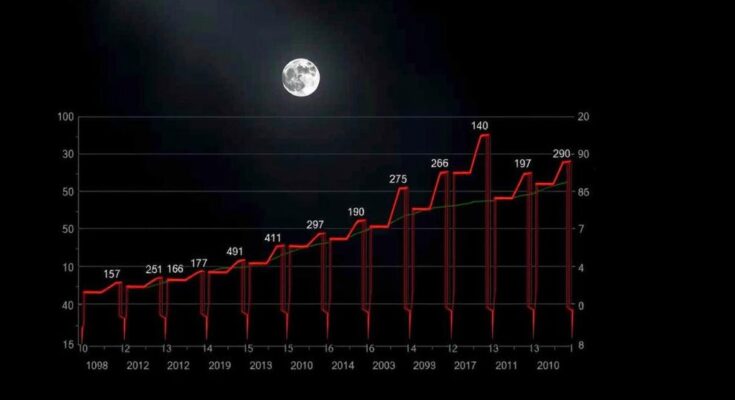In October, Iran recorded at least 166 executions, the highest in over twenty years, as geopolitical tensions with Israel rise. Rights groups criticize the Iranian regime for exploiting these tensions to divert attention from human rights abuses. Significant executions include citizens from various ethnic backgrounds, with calls for international action to address this alarming trend.
In October, Iran witnessed a staggering surge in executions, with at least 166 individuals hanged, marking the highest monthly total in over two decades. According to the Iran Human Rights Organization, this spike is somewhat overshadowed by heightened geopolitical tensions between Iran and Israel, which some rights advocates believe are diverting focus from grave domestic issues. Mahmood Amiry-Moghaddam, director of the Norway-based organization, stated, “While the world’s attention is focused on the tensions between Iran and Israel, the Islamic Republic is using this opportunity to conduct the largest wave of executions in Iran’s prisons in two decades.” He urged international leaders to act swiftly to prevent a possible increase in executions amid looming regional conflicts. The executed comprised individuals from various backgrounds, including Afghan, Baluch, and Kurdish ethnicities, with at least six women among them. Charges ranged from intentional murder and drug offenses to vague accusations like “enmity against God.” Disturbingly, two executions were carried out in public, highlighting the harsh realities of Iran’s judicial system. Global criticism of Iran’s capital punishment practices remains rampant, as Amnesty International’s findings indicated that nearly 75% of all recorded executions in 2023 occurred in Iran. The Human Rights Activists News Agency (HRANA) reported at least 811 executions in Iran over the past year, generating significant international concern, especially after the execution of Jamshid Sharmahd, a German-Iranian national. Mai Sato, the UN Special Rapporteur on Human Rights in Iran, addressed the troubling rise of executions in her initial report. She emphasized that Iran’s application of the death penalty often exceeds accepted legal standards, noting that it should only be assigned for the “most serious crimes,” a definition that problematic charges like “corruption on earth” seem to undermine. Since the beginning of Masoud Pezeshkian’s presidency, more than 350 executions have been recorded, paralleling escalating tensions over both Iran’s nuclear program and regional conflicts. Sholeh Zamini, a women’s rights advocate, highlighted Iran’s refusal to permit UN investigations, insisting it shields its dreadful human rights abuses from global scrutiny. Ethnic and religious minorities continue to bear the brunt of Iran’s execution rates. At least 49 Afghans were executed in the first ten months of 2024, an alarming trend attributed to both political motivations and systemic discrimination, particularly since the Taliban regained control of Afghanistan. Roya Boroumand from the Abdorrahman Boroumand Foundation pointed out that the increase in executions often correlates with government instability. “Historically, the government ramps up executions when it feels threatened or unstable,” she remarked, recalling past spikes during tumultuous times, such as after the Iran-Iraq War. The death penalty’s reach is expanding beyond minorities to include an alarming number of women, reflecting a strategy of coercion aimed at the broader populace during significant unrest. Following the 2022 uprising, prompted by Mahsa Amini’s death, Iran’s leadership appears to leverage the death penalty to systematically suppress dissent and instill fear among its citizens. Amnesty International speculates that the intensified use of capital punishment serves as a method to reinforce government control while simultaneously silencing opposition.
The article discusses the significant increase in executions in Iran during October, highlighting critical human rights concerns. With a reported 166 executions in one month, this number reflects the highest rate in over twenty years, correlating with rising geopolitical tensions. Various human rights organizations, including Amnesty International, have condemned these actions and called for international intervention, citing the death penalty’s misuse amidst a backdrop of political unrest and discrimination against ethnic minorities.
In summary, Iran’s October execution rates exposed a troubling link between governmental instability and increased capital punishment, particularly within minority communities. The international community, along with various human rights advocates, is calling for urgent attention to these issues as Iran’s regime appears to leverage executions as a method of control in the face of growing dissent. The totality of the situation underlines a stark need for reform and accountability within Iran’s judicial practices.
Original Source: www.iranintl.com



